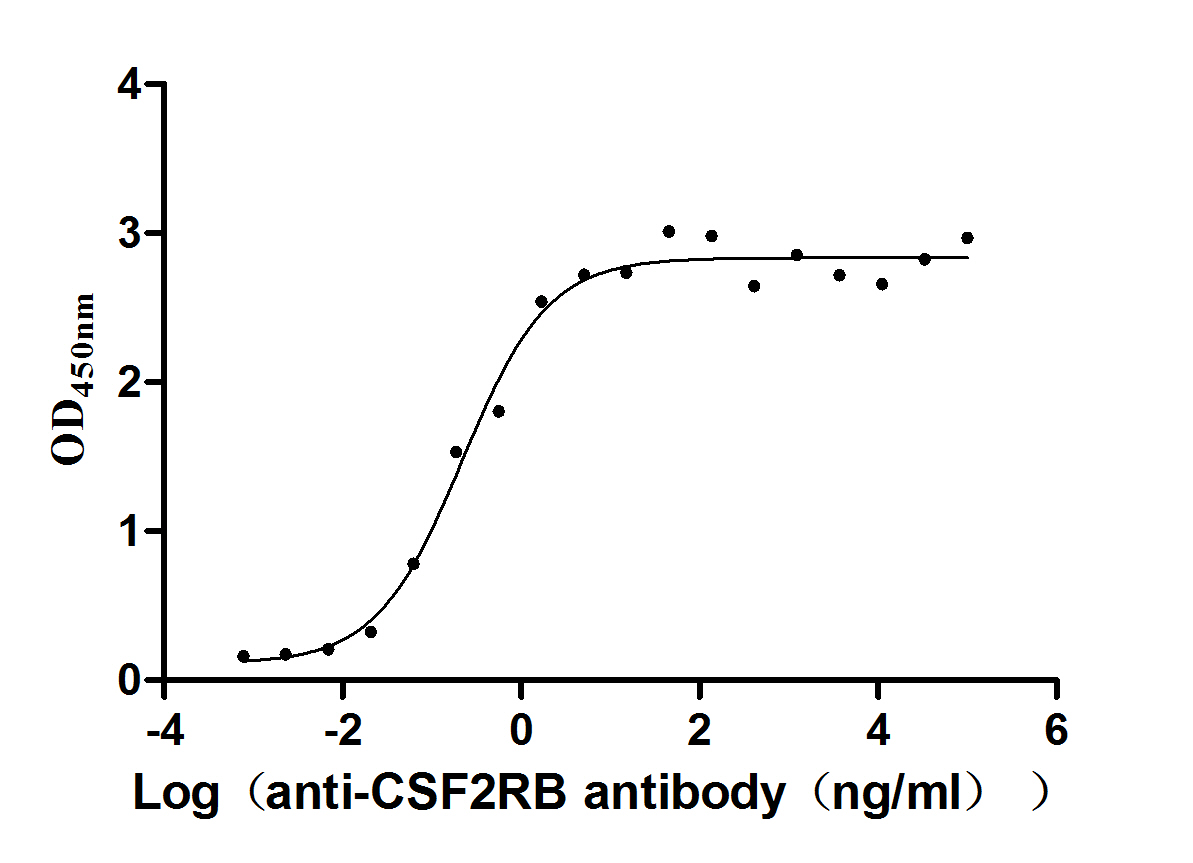Alternative Names
Beta-C; CD131; CDw131; Colony stimulating factor 2 receptor beta; Colony stimulating factor 2 receptor beta low affinity (granulocyte macrophage); Common beta chain; Csf2rb; Cytokine receptor common beta chain; Cytokine receptor common beta chain precursor (CDw131 antigen); Cytokine receptor common subunit beta; GM CSF/IL 3/IL 5 receptor common beta chain; GM-CSF/IL-3/IL-5 receptor common beta subunit; granulocyte-macrophage colony-stimulating factor receptor, beta; IL3RB; IL3RB_HUMAN; IL5RB; Interleukin 3 receptor, beta; Interleukin 3 receptor/granulocyte macrophage colony stimulating factor 3 receptor beta (high affinity); Interleukin 5 receptor, beta; SMDP5; stimulating factor 3 receptor, beta (high affinity)
Immunogen
Recombinant Human CSF2RB protein
Immunogen Species
Homo sapiens (Human)
Purification Method
Affinity-chromatography
Concentration
It differs from different batches. Please contact us to confirm it.
Buffer
Preservative: 0.03% Proclin 300
Constituents: 50% Glycerol, 0.01M PBS, PH 7.4
Tested Applications
ELISA
Storage
Upon receipt, store at -20°C or -80°C. Avoid repeated freeze.
Lead Time
Basically, we can dispatch the products out in 1-3 working days after receiving your orders. Delivery time maybe differs from different purchasing way or location, please kindly consult your local distributors for specific delivery time.
Description
The creation of the CSF2RB recombinant monoclonal antibody involves a meticulous and controlled process to ensure its exceptional quality and specificity. It begins by isolating B cells from an immunized animal using the recombinant human CSF2RB protein as the immunogen. Total RNA is extracted from these B cells and converted into cDNA through reverse transcription. The CSF2RB antibody genes are then amplified using specific primers targeting the antibody constant regions and inserted into an expression vector. Through transfection, the vector is introduced into host cells, enabling the production of the CSF2RB recombinant monoclonal antibody. After a period of cell culture, the antibody is collected from the supernatant and purified using affinity chromatography, resulting in a highly purified form suitable for various applications. To ensure its reliability and functionality, CUSABIO conducts ELISA to validate its specificity and effectiveness in detecting human CSF2RB protein.
Usage
For Research Use Only. Not for use in diagnostic or therapeutic procedures.






